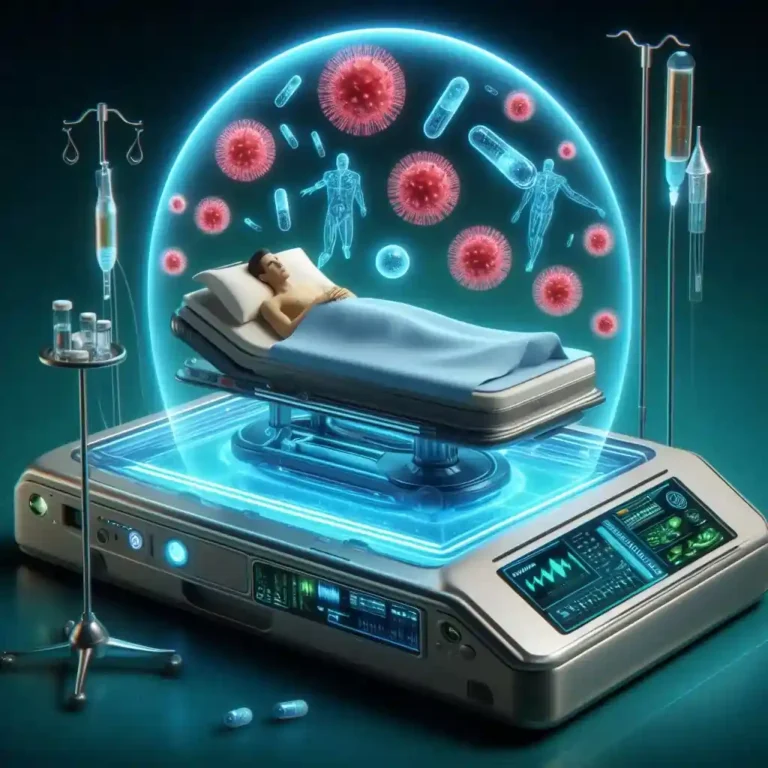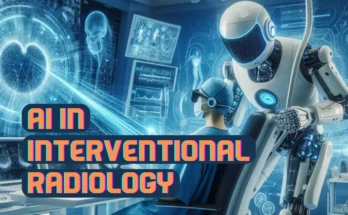Introduction
Interventional therapy has taken the medical world by storm as the latest and most efficient diagnostic tool. It has almost nullified the demand for evasive processes to diagnose and treat critically ill patients. This procedure relies on small incisions and body orifices to reach and treat internal structures by means of advanced imaging. In this piece, we shall focus on making interventional therapy lucid by explaining its convoluted techniques plainly to anyone.

Table of Contents
What is Interventional Therapy?
Interventional therapy is creating waves in the medical field as the newest and most effective way to identify health issues. It’s nearly eliminated the need for invasive procedures to find and manage serious health conditions. This method depends on tiny cuts and natural body openings to access and deal with inner body parts through high-tech image guidance. In this article, we’ll aim to break down interventional therapy and explain its sophisticated methods in a simpler way.
The Essence of Interventional Therapy
Helping patients is the main goal of interventional therapy. This type of treatment uses small cuts or natural openings in the body. Doctors use advanced imaging tools like angiography, fluoroscopy, CT scans, MRIs, and ultrasounds. These tools help guide medical instruments inside the body. This approach aims to treat patients with the least invasive methods possible. The goal is to reach the affected area with minimal disruption to the patient’s body1.
Techniques and Procedures
Interventional therapy procedures are a group of advanced medical techniques used to treat various conditions, often involving chronic pain or issues within specific areas of the body. These procedures are typically less invasive than traditional surgery and are performed under the guidance of imaging technologies. Here’s a detailed look at some common interventional therapy procedures:
Spinal Injections & Interventions
These procedures are designed to deliver pain-relieving medication directly to the source of pain in the spinal area.
- Interlaminar Epidural Glucocorticoid Injection: Targets the epidural space of the spine to reduce inflammation and pain1.
- Transforaminal Epidural Glucocorticoid Injection: Delivers steroids into the opening at the side of the spine where nerve roots exit1.
- Facet Injection/Medial Branch Block: Used to diagnose and treat pain originating from the facet joints of the spine1.
- Radiofrequency Lesioning/Neurotomy: destroys nerve fibers carrying pain signals to the brain.
- Sacroiliac Joint Injection: Alleviates pain caused by inflammation or dysfunction in the sacroiliac joint1.
Sympathetic Nerve Blocks
These blocks target the sympathetic nervous system, a series of nerves that spread out from your spine to your body, to reduce pain and swelling.
Head and Neck Nerve Blocks
These are used to treat pain in the head and neck region.
Peripheral Nerve Blocks
These blocks are used to interrupt the pain signal from a specific area of the body.
Dry Needling and Trigger Point Injections
These involve inserting a needle into the muscle’s trigger points to relieve pain and improve function.
Surgical Pain Management
Some interventional therapies involve implanting devices to manage pain.
These procedures are typically considered when conservative treatments, such as medication and physical therapy, have not provided adequate relief. It’s important to consult with a healthcare professional to determine the most appropriate interventional therapy procedure for an individual’s specific condition. The procedures mentioned here represent just a few of the many available options within the field of interventional therapy.

Advantages of Interventional Therapy Over Traditional Surgery
- Interventional therapy has revolutionized the way we approach medical treatments. With its minimally invasive techniques, it offers a multitude of benefits over traditional surgery. This article delves into the key advantages that make interventional therapy a preferred choice for many patients and healthcare providers.
Minimized Invasiveness
- One of the most significant benefits of interventional therapy is its minimally invasive nature. Traditional surgery often requires large incisions, which can lead to significant tissue damage and longer healing times. In contrast, interventional therapy procedures typically involve small incisions or even just a needle puncture, resulting in less tissue trauma and scarring1.
Reduced Pain and Discomfort
- Patients undergoing interventional therapy often report less pain and discomfort compared to those who have had traditional surgery. This is due to the smaller incisions and the precise targeting of the affected area, which minimizes the impact on surrounding healthy tissues1.
Shorter Recovery Times
- Recovery from interventional therapy is generally quicker than from traditional surgery. Patients can often return home the same day and resume normal activities much sooner. This is a significant advantage for those who cannot afford extended time off work or other daily responsibilities1.
Lower Risk of Complications
- With smaller incisions and less disruption to the body, interventional therapy carries a lower risk of complications such as infections and bleeding. Additionally, the use of local anesthesia rather than general anesthesia reduces the risks associated with sedation1.
Cost-Effectiveness
- Interventional therapy can be more cost-effective than traditional surgery. The shorter hospital stays, reduced need for pain medication, and quicker return to work all contribute to lower overall healthcare costs1.
Better Outcomes
- Studies have shown that the outcomes of interventional therapy can be as good as, or even better than, those of traditional surgery. The precision of these procedures allows for targeted treatments that can improve the efficacy of the intervention1.

Risks and Considerations
Interventional therapy has emerged as a beacon of hope for many patients, offering less invasive treatment options and quicker recovery times. However, like all medical procedures, it comes with its own set of risks and considerations. Understanding these is crucial for patients and healthcare providers alike. This article outlines the potential risks associated with interventional therapy, ensuring that the term “interventional therapy” remains central to our discussion.
Infection Risks
- Although rare, infections can occur after interventional procedures. The risk is minimized by the use of sterile techniques and, in some cases, prophylactic antibiotics1.
Bleeding Complications
- Patients may experience bleeding at the site of the procedure. Those with coagulopathy or on anticoagulant medication are at a higher risk and require careful management.
Reactions to Anesthesia
Damage to Surrounding Tissues
Equipment Malfunction
Allergic Reactions
- Patients may have allergic reactions to the contrast dye used in imaging or other materials introduced during the procedure.
Long-Term Efficacy and Recurrence
Psychological Impact
- The psychological response to interventional therapy can vary. Some patients may experience anxiety or stress related to the procedure or its outcome3.
The Future of Interventional Therapy
Interventional therapy has been a game-changer in the medical field, offering less invasive treatment options and quicker recovery times for patients. As we look to the future, this field is poised for even more groundbreaking advancements. This article explores the exciting developments we can anticipate in interventional therapy.
Technological Advancements
- The future of interventional therapy is closely tied to technological innovation. We are likely to see an increase in procedures that are radiation-free, thanks to advancements in imaging technologies1. Augmented reality (AR) and artificial intelligence (AI) are set to play a significant role, enhancing the precision and efficiency of interventional procedures1.
Expanding Treatment Options
- Interventional therapy will continue to expand its reach, treating a wider array of conditions. From uterine fibroid embolization (UFE) to prostate artery embolization (PAE) and beyond, the variety of accessible treatments is growing1. This expansion means that more patients will benefit from these minimally invasive techniques.
Improved Imaging and Guidance
- Imaging is the cornerstone of interventional therapy, and future improvements will offer even greater clarity and detail. Live guidance of procedures, such as thrombectomy, will benefit from enhanced 2D and 3D imaging, intravascular ultrasound (IVUS), and other modalities1. This will allow for more complex interventions to be performed with higher success rates.
Personalized Medicine
- The move towards personalized medicine will be reflected in interventional therapy as well. Treatments will be increasingly tailored to the individual patient’s condition, anatomy, and needs, resulting in better outcomes and fewer side effects.
Process-Based Approaches
- There is a trend towards process-based therapy, where the focus is on modifiable elements of treatment rather than broad, one-size-fits-all approaches3. This shift will lead to more effective and adaptable interventional therapies.
Patient-Centric Care
- The future of interventional therapy will emphasize patient-centric care. This means treatments will be designed with the patient’s comfort, convenience, and overall experience in mind4. The goal is to not only treat the condition but also to enhance the patient’s quality of life.
Conclusion
Interventional therapy represents a significant leap forward in medical treatment options. Its ability to minimize patient discomfort while providing effective care is a testament to the ongoing innovations in healthcare.
Commonly Asked Questions about “Interventional Therapy”
- Interventional therapy refers to a range of treatments that are performed under the guidance of imaging techniques. In pain management, it includes procedures like epidural steroid injections, nerve blocks, and minimally invasive surgical procedures. These are used to treat acute, chronic, or acute on chronic pain conditions1.
- No, interventional pain procedures are generally reserved for focal pain areas, such as a specific joint, rather than diffuse pain conditions like fibromyalgia. The effectiveness of interventional treatments for widespread pain conditions has been largely disproven1.
- Interventional therapies can provide significant relief for patients with select acute, subacute, and chronic pain conditions. They are associated with functional improvements, cost savings, and typically require little or no downtime for the patient1.
- Interventional cardiology has seen significant advancements, particularly with the introduction of transcatheter treatments for heart valve diseases. For example, the FDA approval of devices for tricuspid valve replacement and repair marks a major milestone in treating tricuspid regurgitation, offering new hope for patients who previously had limited treatment options2.
- In heart failure management, interventional medical therapy may include the use of inotropes such as dopamine, dobutamine, and milrinone. These drugs are used in treating acute heart failure and have shown to be beneficial in the short-term management of the condition3.

